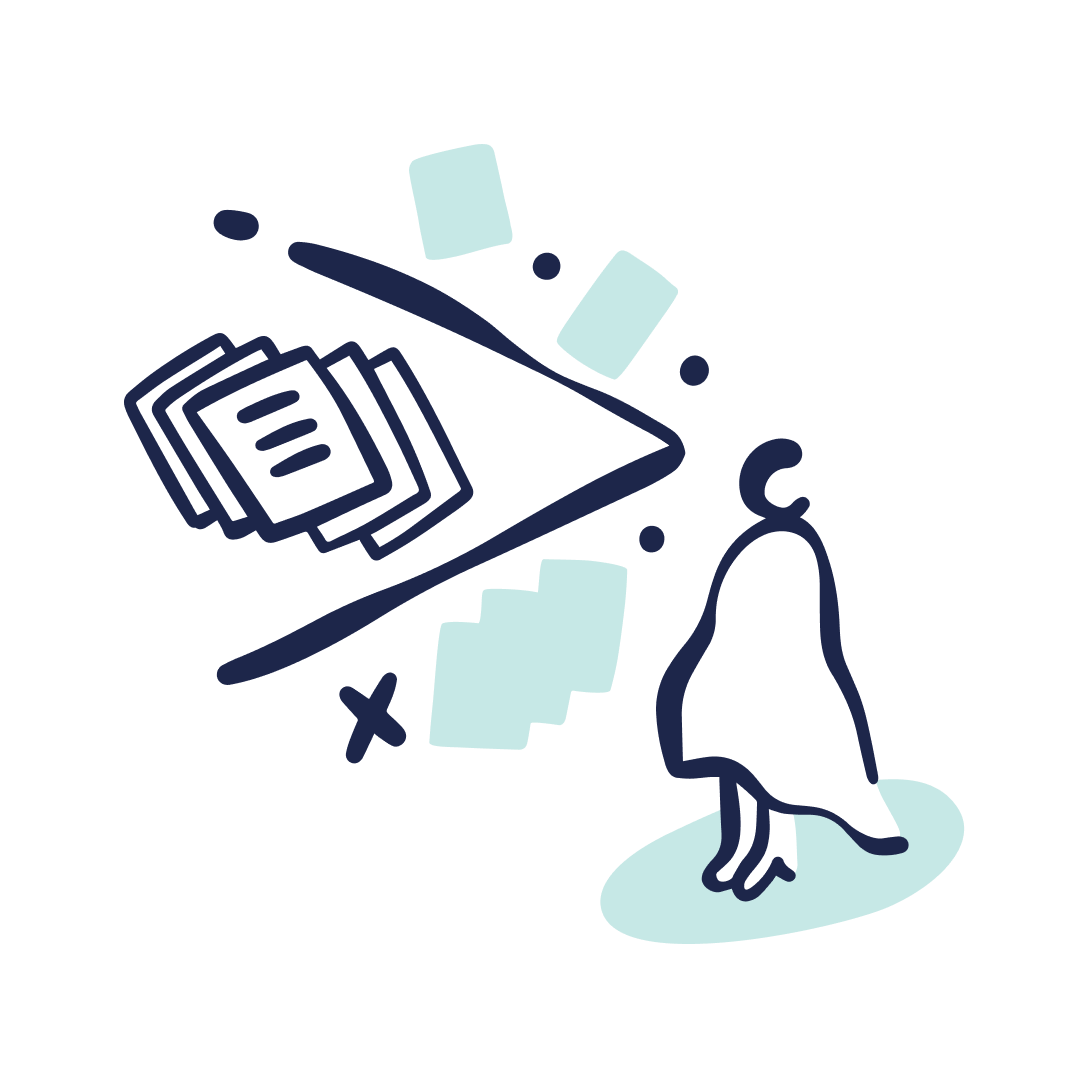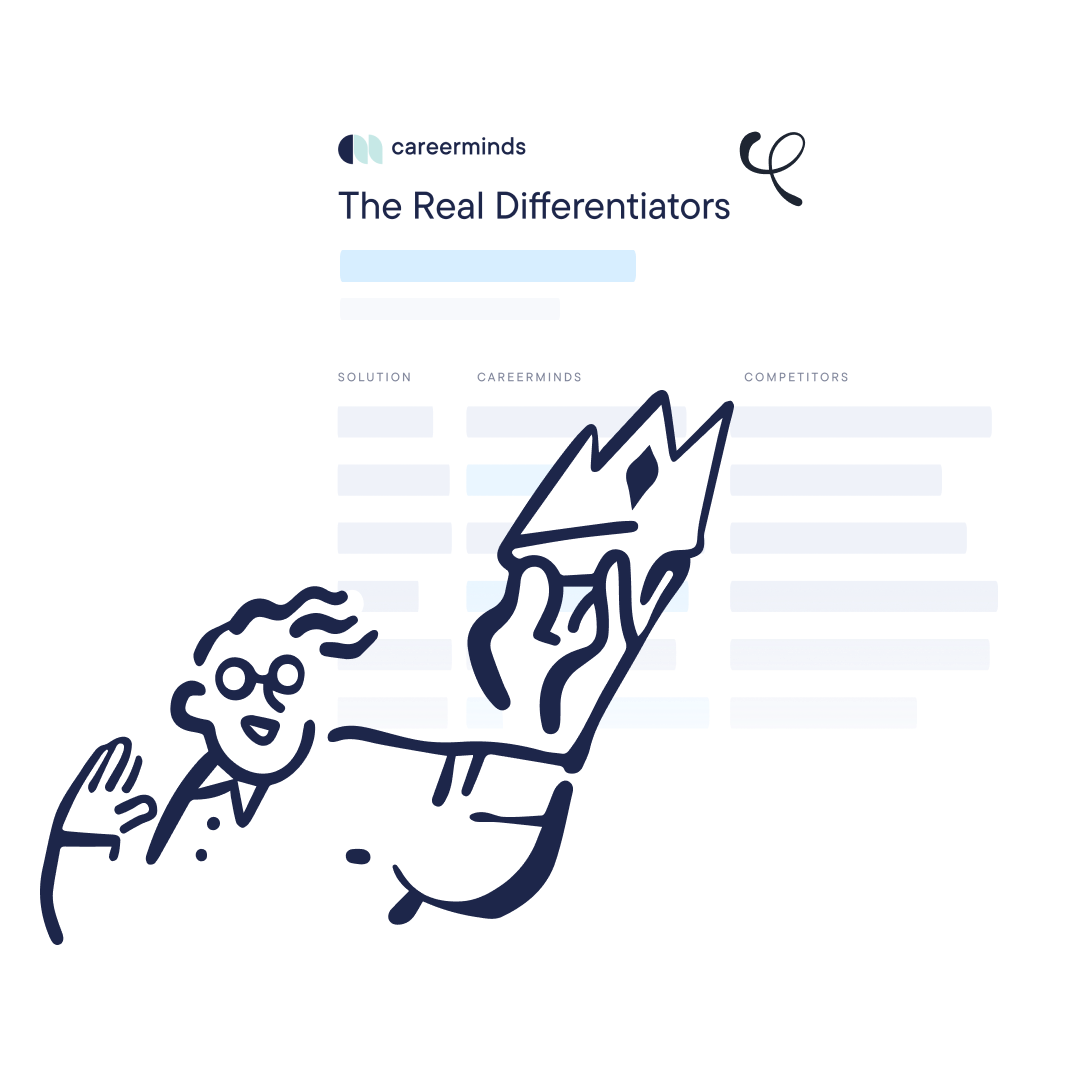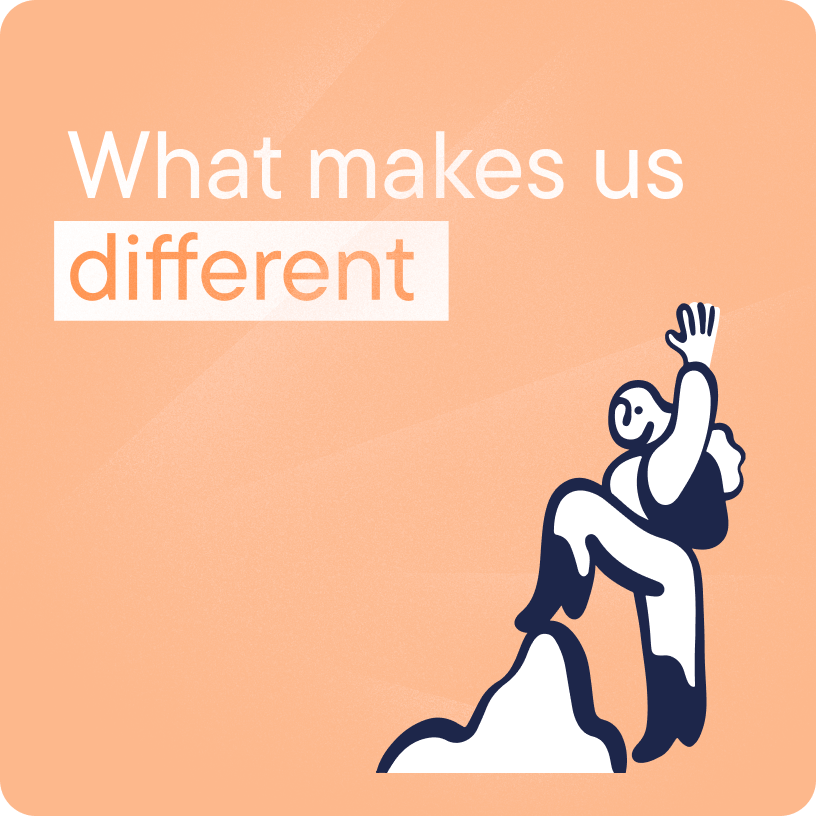Outplacement Services
Modern Outplacement. Measurable Results.
We are the modern outplacement partner for HR leaders who demand results. Faster transitions, measurable impact, and cost efficiency, all powered by data and a smarter coaching model.

You're successful because we're different
Unlimited 1:1 coaching until landing
Participants have access to our services for life. No time limits. Their support is proactive and customized.
We write job-winning resumes
Our experts write high-value, keyword-optimized resumes that get participants market-ready fast.
We work where your people need us
We’re a one-firm firm with consistent delivery and local expertise in every major market in the world.
A true partnership
We’re responsive, flexible, and transparent. Our partnerships are focused on results and built on transparency and trust.
Transparent results
Transparency saves money and delivers better results. We regularly share benchmarking, market insight.
Customized for every person
From executive to associate, we build a strong, personalized experience for everyone, no matter the role.
Global outplacement capabilities
Companies all over the world work with Careerminds, we offer all of these global outplacement services and more with our industry-leading results and people-first mindset, going above and beyond the competition to become a true partner for you and your organization before, during, and after your RIF event.

Happy clients and satisfied participants
Companies all over the world work with Careerminds to provide support for their employees, protect their employer brand, and reduce stress for everyone involved in transition.

Personalized outplacement solutions for all levels
We guarantee you'll be happy with us as your global outplacement partner.
| Overview | Advantage | Advantage Prime | Advantage Plus | Advantage Pro | Advantage C-Suite | ||||||
|---|---|---|---|---|---|---|---|---|---|---|---|
| One-on-one career coaching | |||||||||||
| Access to Team of Experts | |||||||||||
| Resume writing | |||||||||||
| E-lessons | |||||||||||
| Webinars | |||||||||||
| LinkedIn® Optimizer | |||||||||||
| Live job feed | |||||||||||
| On-screen guide | |||||||||||
| Document repository | |||||||||||
| Job Cart & PerfectMatch | |||||||||||
| CM social network | |||||||||||
| Social consulting | |||||||||||
| Discussion forums | |||||||||||
| Career assessment |
| Additional Program Features | |||||||||||
|---|---|---|---|---|---|---|---|---|---|---|---|
| Executive MyResume/CV Writer | |||||||||||
| DiSC leadership assessment | |||||||||||
| Executive networking membership | |||||||||||
| Executive coach | |||||||||||
| Research support | |||||||||||
| Executive bio | |||||||||||
| Executive onboarding |
Frequently asked questions
What is the outplacement process and what can I expect from Careerminds as my provider?
Our outplacement process is an all-encompassing, supportive program that starts with initial planning and includes personalized coaching, resume and job search assistance, interview preparation, and continuous support until the individual secures a new position.
Learn more about the outplacement process and our “until placement” service.
What features are typically included in outplacement services?
Careerminds’ comprehensive outplacement program encompasses personalized coaching, resume and LinkedIn profile development, interview preparation, job search strategy, networking opportunities, access to online resources and webinars, and ongoing support until the individual finds new employment.
Explore what outplacement is and what sets our services apart.
Does Careerminds provide face-to-face or virtual outplacement?
We offer both face-to-face and virtual coaching. Our career consultants can meet with participants in-person. Alternatively, we provide virtual outplacement services through our cutting-edge online outplacement services program.
Discover the benefits of virtual outplacement.
What Industries does Careerminds work with?
Careerminds partners with a diverse array of industries. Our adaptable services cater to the unique needs of each sector, ensuring optimal support for transitioning employees. We also match career consultants to participants based on the best background fit, ensuring specialized support.
Does Careerminds offer on-site support?
Yes, we provide on-site support for notification meetings. Our Career Coaches can be on-site to support your team, meet with impacted employees one-on-one for emotional counseling, explain Careerminds’ services, and answer any questions. Notification meetings are also available, when appropriate, to provide information to employees being terminated.
Does Careerminds offer planning, notification, and logistics support?
With Careerminds as your partner, you benefit from a team of experts specializing in career transition. Whether you need best practices for notification meetings, crafting internal communication messages, or assistance with timeline planning for a reduction in force (RIF), we are here to help.
We provide customized virtual training sessions and webinars designed to prepare managers and team members for notification meetings and follow-up conversations with retained employees. Our training is tailored to reflect your specific business objectives and messaging, ensuring alignment with your unique process.
Didn’t find what you’re looking for? — speak to an expert to get your questions answered
Help and advice
In need of outplacement assistance?
At Careerminds, we care about people first. That’s why we offer personalized talent management solutions for every level at lower costs, globally.





